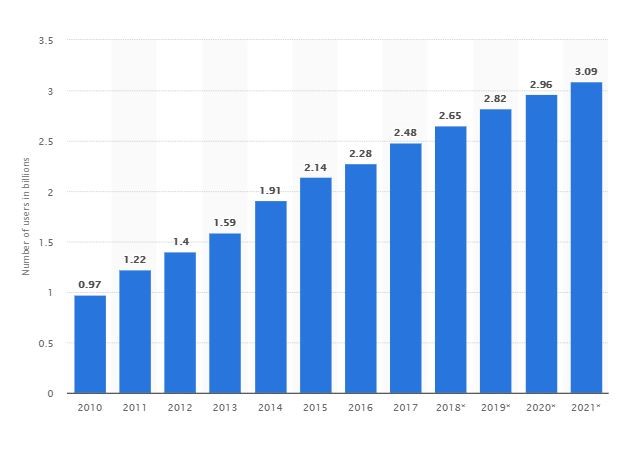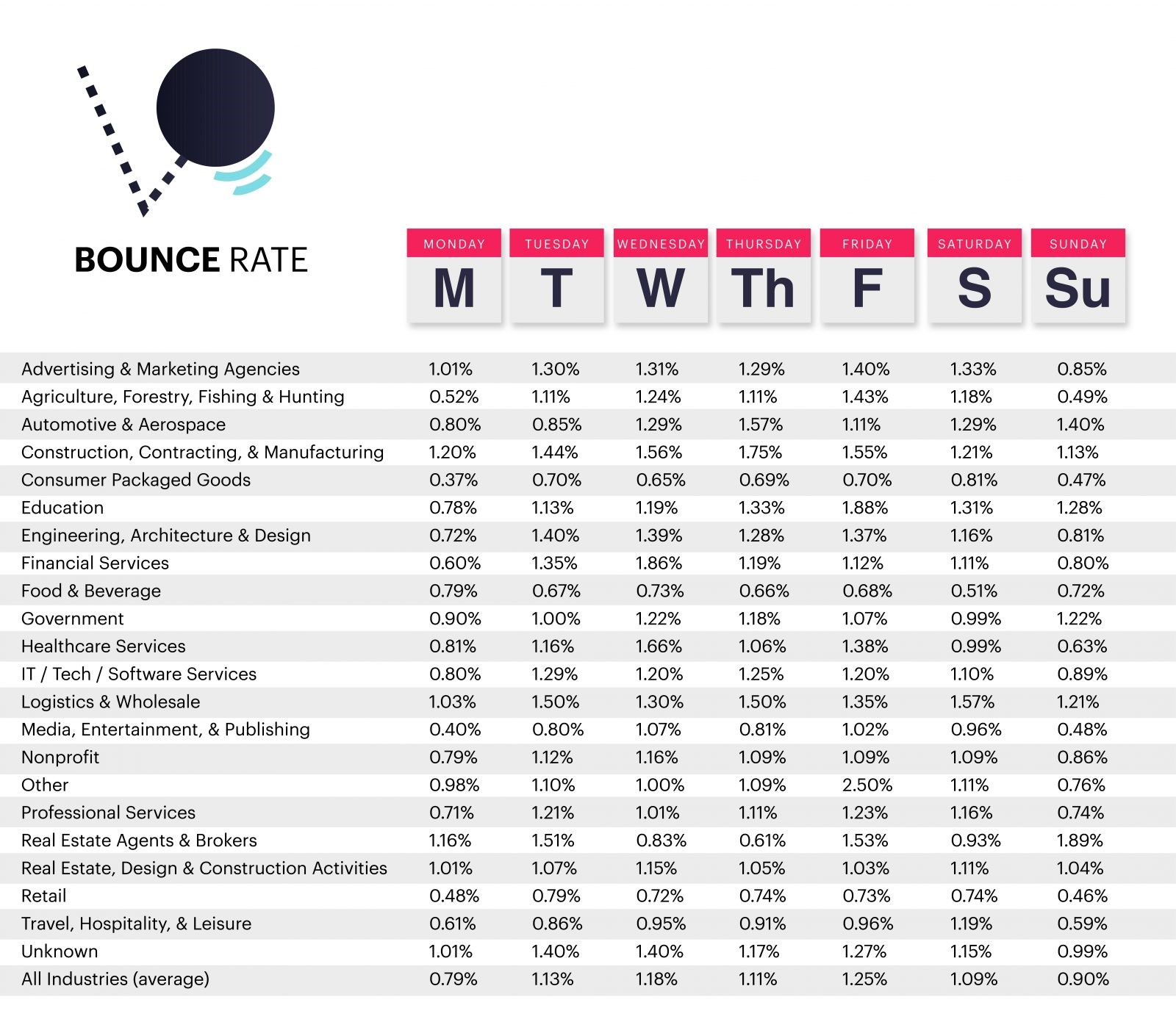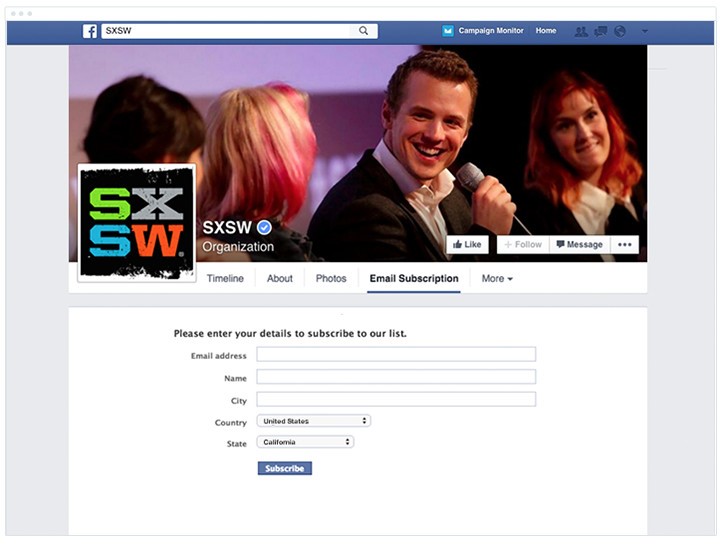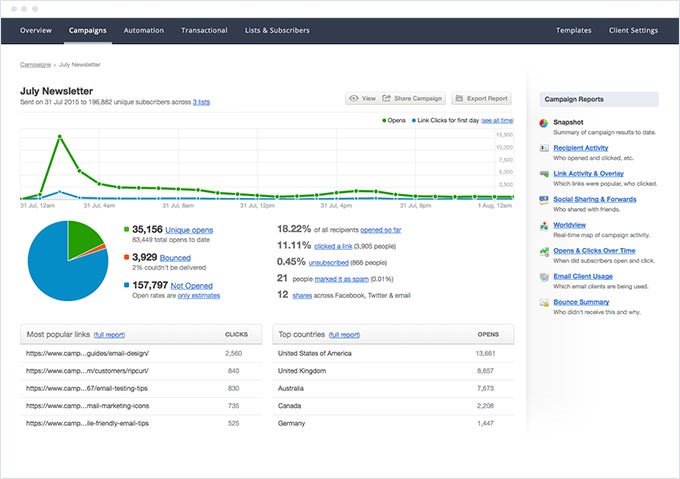Brands use a plethora of digital marketing channels. For those that have the resources, tools like SEO, content, PPC, and email are common. For those that have a limited budget, one or two channels may suffice.
Out of all the digital marketing channels available to brands, there is one particular channel they use more than any other – email.
Email marketing for business is a great way to stay top of mind, generate revenue, and stay abreast of what their customers want. This post looks at 6 major reasons why email is essential to brands both large and small.
Table of Contents
1. Email marketing for business has an unquestionable return
If a marketer were asked to give just one reason why they favor email over other digital channels, they’d probably say email marketing works. It’s as simple as that.
Time and time again, email has proven to be the king of digital marketing in terms of ROI. Brands that are looking to drive revenue turn to email marketing due to an ROI of 4,400%.
For every dollar brands invest in email marketing, they get $44 in return. No other digital marketing channel consistently offers this kind of return.
In contrast, the ROI for paid ads is a mere 200%. For every dollar brands invest in Google Ads, they get $2 in return. An ROI of 200% might still seem significant, it pales in comparison to the 4,400% brought in by email marketing.
Email marketing’s high ROI can be attributed to targeting and personalization. Email enables marketers and entrepreneurs to send messages, promotions, and offers that are relevant to each subscriber. In fact, targeting is essential if you want to get a 4,400% ROI.
Additionally, this mode of communication makes it easier for businesses to follow up directly with their customers, making them feel valued.
The relevance that email marketing for business offers is what drives conversions and increases revenue. According to Campaign Monitor’s 2019 email marketing benchmarks, the average email click-through rate (CTR) is 2.69%. Meanwhile, Wordstream states that the average CTR of Facebook ads is just 0.90%.
This means that people are three times more likely to click on a link within an email than they are to click on a sponsored post on Facebook.
Mushfiq Sarker, CEO of LaGrande Marketing, shared the effectiveness of email marketing for specific legal fields, “In our experience working with 200+ law firms nationwide and various practice areas, email marketing isn’t for everyone. But for estate planning attorneys specifically, we’ve found it to be incredibly effective. Our clients have seen an average ROI of $54 for every $1 spent. By implementing strategies like segmentation, we’ve got a 29% average increase in open rates compared to generic email campaigns. However, as I mentioned, it really depends on the practice areas. For example, we’ve seen that practice areas like personal injury, criminal defense, and immigration law don’t see the same level of return.”
The distinction Mushfiq Sarker makes about practice area effectiveness highlights a critical reality that many legal marketers miss – while email marketing delivers exceptional ROI for estate planning clients who are in deliberate, research-driven decision processes, a Personal Injury lawyer typically acquires clients during crisis moments when someone has just been in an accident and needs immediate help rather than nurturing through email sequences.
What makes email marketing challenging for a Personal Injury lawyer isn’t the channel itself but the time-sensitive, emotionally charged nature of personal injury cases where potential clients are searching for representation within hours or days of an incident rather than contemplating legal needs over weeks or months like estate planning prospects.
Let’s talk about what makes email campaigns actually work – because it’s not about flooding inboxes anymore, it’s about sending the right message at just the right moment, like you’re reading your customer’s mind. Once you really get to know your audience and slice up your list into smaller groups who share the same interests, that’s when the magic happens.
2. Email marketing has the largest user base.
Platforms like social media and YouTube permeate through much of today’s culture, especially among the younger generations. However, that doesn’t mean social media is the most widely used digital communications platform.
According to Statista, there are over 2.8 billion social media users in the world as of 2019. 2.4 billion are on Facebook, around 330 million are on Twitter, and LinkedIn has more than 600 million members.

Source: Statista
Despite these numbers, email still beats every social media network by a wide margin when it comes to its userbase. In fact, email has more users than Facebook, Twitter, and LinkedIn combined. As of Statista’s latest count, email has approximately 3.9 billion users worldwide, which equates to about half of the world’s entire population.
While using a variety of digital channels is important, email marketing is still the key to reaching the highest number of people possible in a meaningful way.
3. Email marketing for business has high deliverability
Email marketing benchmark data for 2019 indicates that the average email bounce rate across industries is only 1.06%. This means that a brand’s email has nearly a 99% chance of being delivered to its intended recipient.

Source: Campaign Monitor
On social media sites like Facebook, however, it’s an entirely different matter. When a brand posts on Facebook, only 2% of their followers will see it. In an effort to push brands to pay for advertising, Facebook has created specific algorithms that limit a brand’s organic reach. Other social networks have already followed suit.
To put this information into perspective, here are a couple of scenarios:
If a brand sends a promotional eCommerce email to 1,000 subscribers, about 990 of them will receive the email.
Meanwhile, say the brand has a Facebook page that has the same number of followers. If the brand posts an update, only 20 of their followers will see the post on their newsfeed.
Based on these scenarios, the brand’s email message has about 50 times more chances to be seen than their Facebook post.
4. Email marketing is versatile.
While all brands, no matter their size or niche, should make email marketing one of their top priorities, a holistic approach to digital marketing is still best.
In addition to email, brands should use as many other digital marketing channels that they possibly can. This is how you empower the growth hacker on your team. They’re able to combine different channels such as paid advertising, social media, SEO, and content marketing to create a steady flow of new customers.
The great thing about email marketing for business is that it can be easily integrated into other digital strategies.
For example, brands can combine their social media and email marketing strategies. One thing brands can do is use social media to potentially grow their email list. On Facebook, brands can add a signup form directly on to their page. By using the right email marketing platform, brands can do this in just a few keystrokes.
The signup form appears as an entirely new tab on top of a brand’s Facebook page, as shown in the image below.

Source: Campaign Monitor
On Twitter, brands can tweet a catchy message and post the link to their signup form or landing page. On Instagram, they can attract the attention of followers with a high-quality image (of an upcoming product, for example) and write a caption that goes something like this:
“Want to receive more exciting updates? Subscribe to our newsletter by clicking on the link in our bio: [link to the signup form]
Brands should also encourage subscribers to share emails on social media. Adding social media sharing icons or buttons to emails is a great way to let social media followers do some of the legwork of spreading the news about a brand and its products.
Brands can also merge their email, content, and SEO strategies.
Search engines don’t index emails, but that doesn’t mean you can’t use them for the purposes of content marketing and SEO. Brands can save their newsletters and transform them into high-quality blog posts. They can turn newsletters that talk about a similar topic into one cohesive blog post and then insert the necessary keywords.
5. Email marketing performance is measurable.
Measuring the performance of certain digital channels can be difficult for marketers.
In a survey Curata, 52% of marketers admitted that they’ve faced challenges when reviewing their ROI from social media. The task of figuring out social media ROI is so cumbersome for brands that 70% of them have said that they don’t even bother doing it.
Content marketing effectiveness is also difficult to determine. According to a Content Marketing Institute report, 57% of content marketers admitted that measuring the performance of their content was their primary challenge. Meanwhile, 52% said it was measuring their content marketing ROI.
This is one particular area where email marketing sets itself apart from other digital marketing channels.

Source: Campaign Monitor
Email marketing performance is easy to measure. Most, if not all, email marketing platforms available today have analytics features that show every metric imaginable. This includes email open rate, click-through rate, bounce rate, email ROI, engagement over time, etc.
Brands that want a convenient tool that simplifies the process of measuring performance should look to email marketing. With this digital channel, there isn’t any guesswork when it comes to figuring out engagement or ROI.
6. Email marketing is reliable
Social media may be a strong digital channel right now, but that doesn’t necessarily mean it will stay that way. There’s no way of telling if it will stay this way permanently. After all, how many social media networks were considered giants years ago but are now gone forever?
With email, you never have to worry about this kind of thing happening. Email has been around for almost 50 years, and it is as strong as ever.
If you’re active online, then chances are you have a valid email address. You’ll need to sign up for most things on the web because it’s one of the first pieces of information that an online service will ask from you.
Think about this: you can create your own email address with any email client you want (Gmail, Mailbird, Outlook, Yahoo!, etc.) without being a member of any social media network, but you can’t sign up for any social media network without an email address.
However, it is very important to take the choice of email client seriously. Before choosing an application, be sure to understand exactly what you need. Many programs are now equipped with AI and robust security features. There are both paid and free programs. Here, everyone chooses what he likes.
This prevalence is why email dominates the online world. It’s a medium of communication that shows no sign of disappearing any time soon. In fact, email will sit on its digital throne for the foreseeable future. By 2023, email’s 3.9 billion users is expected to balloon to over 4.3 billion.
If brands are looking for a reason to use email, then a pool of potentially billions of subscribers should be at the top of their list.
Conclusion
Whether they’re family businesses or companies listed on the New York Stock Exchange, it’s crucial for brands to have a diverse digital marketing portfolio. Leverage all the digital marketing channels your budget allows. A holistic strategy is the most effective.
At the same time, brands should also be aware of which digital marketing channels they should focus on. With its profitability, reach, and measurability, businesses should consider paying more attention to email marketing.
By prioritizing email marketing for business, you can reach a wider audience, grow your revenue, and separate yourself from the competition.
Ash Salleh is the Director of SEO at Campaign Monitor, where he works closely with content, copy, and analytics teams to improve site-wide optimization. Prior to his time at Campaign Monitor, he also provided SEO and digital marketing expertise at Zappos and Axiata Digital. You can find him on Gravatar.